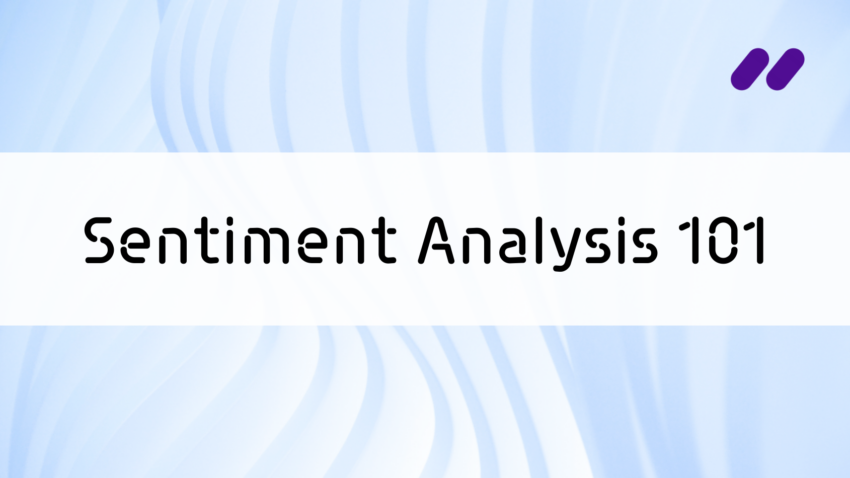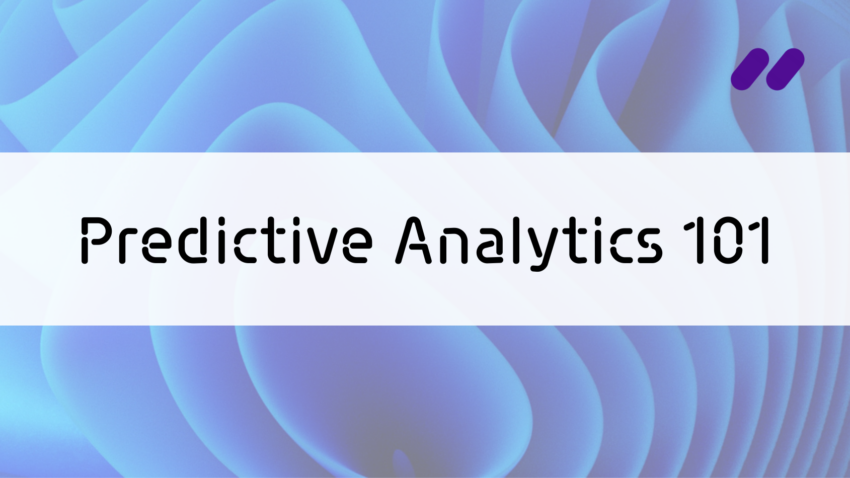If you work in the field of customer or employee experience, sentiment analysis has likely come across your desk before, or maybe you do some sentiment analysis today. This methodology has enormous potential to automate parts of your everyday work and improve your understanding of the experiences that your customers and employees have.
The more qualitative feedback from customers or employees that your business collects, the more valuable it becomes to mine this data for actionable insights that you can use to improve products, services, and experiences. Feedback channels like reviews, surveys, and support tickets contain a goldmine of information coming directly from the voice of the customer or voice of employee. It’s up to you to investigate how people feel about your company!
This post is all about sentiment analysis for businesses. And it’s written for you – not for SEO – to better understand how to employ this technology and the strategy that comes with it at your organization.
Jump to a section:
- What is sentiment analysis?
- Why automate sentiment analysis?
- What insights can you get from sentiment analysis?
- Business use cases for sentiment analysis
Glossary of sentiment analysis terms
Reading about sentiment analysis can sometimes bring more questions than answers. Here’s our glossary of the more technical terms you might encounter, and what they mean:
- Aspect-based: Describes a type of sentiment analysis that associates opinions with categories or topics (broadly referred to as aspects) that are identified automatically in the data
- Intent: Set of behaviors that indicate to you if a person is going to take a certain action, like a purchase
- Polarity: Refers to whether a text is considered to be positive or negative in terms of the emotions expressed within it
- Qualitative data: As opposed to quantitative data, this refers to data usually in the form of words and phrases that cannot be expressed numerically
- Rule-based: Describes a type of sentiment analysis that uses predefined rules, keywords, dictionaries, or lexicons to provide a framework for the analysis of the data
- Sentiment: Wait a minute, you want us to define this? Just kidding – sentiment refers to the emotion or feeling expressed in a text, such as happiness, disappointment, delight, frustration…
- Unstructured data: In comparison to structured data, this refers to any kind of data that does not fit a predefined model of organization (like a table with rows and columns that has an expected set of values). Qualitative data like open-ended survey responses, reviews, and chat conversations are forms of unstructured data. Here is a more in-depth post about unstructured data.
1. What is sentiment analysis?
Sentiment analysis is a method of analyzing text-based qualitative data in which the objective is to determine whether a text or part of a text is:
- Positive or negative
- Showing satisfaction or dissatisfaction
- Containing questions or suggestions
- Requiring urgent attention or is low priority
You may have heard other names for sentiment analysis like opinion mining, sentiment mining, or emotion detection. In some way, all forms of advanced sentiment analysis leverage natural language processing, deep learning, and machine learning techniques to process text written by real people. This kind of text is quite difficult to analyze automatically as it is often unpredictable, context-dependent, and contains non-literal meanings like ironic or sarcastic comments (“I just love waiting in line at the customer service desk for 45 minutes!”).
Despite the challenges involved in the automation of this task, you can imagine that manually reading through a large volume of text-based comments is not viable for many reasons – the biggest of which is simply time. Sentiment analysis automates work that would otherwise be impossible (or at least, extremely unproductive) to do manually. This is why sentiment analysis has such a large application in business. Companies need to understand how people – like customers or employees – feel about their products, services, and experiences. Especially in today’s digital-first world, businesses compete fiercely in the kinds of experiences that they can deliver to their audiences.
We will look at these applications of sentiment analysis in a later section, but here is a quick view to show you it can be used for different use cases and feedback channels:
- Gauging the reputation of your brand online in social media comments and product reviews
- Identifying commonly mentioned issues and pain points from chat conversations and support tickets
- Finding correlations between low NPS or CSAT scores in surveys and tangible aspects of your business
Of course, the quality of your sentiment analysis depends on the methodology used to extract insights. To keep this post more actionable and less technical, we will just briefly mention the types of sentiment analysis you should be concerned with in your research:
- Manual: It’s completely possible to do sentiment analysis yourself at small scales. These kinds of approaches generally use Python or R, and rely on a set of predefined rules, keywords, and dictionaries or lexicons to guide the analysis of the text. This is great for small projects or literature analysis, where you know in advance the themes or categories that you want to analyze, and can fine-tune the model to isolate these insights.
- Automated: These approaches use natural language processing, machine learning, and deep learning to find insights automatically. Within this broad category, there are various levels of automation. Some models still require lexicons (for instance, providing keywords for a specific industry to guide the analysis), while others are much better at learning from the context of a dataset. For business use cases with large volumes of feedback data in which you cannot necessarily predict the themes, automated approaches are extremely advantageous. And simply from an operations perspective, the less manual work involved in training the model, the faster you will get insights.
2. Why automate sentiment analysis?
Automation in the customer feedback loop enables businesses to improve internal processes and external customer experiences. For sentiment analysis applications, there are a few considerations that tie automation closer to your business objectives:
- Volume: Let’s get the obvious out of the way. No matter how great your team is, no one is sorting through thousands of surveys, reviews, or other customer comments or conversations manually. This is really the core idea behind automation with AI, and it’s why it’s so prevalent for use cases like customer data analysis. It’s a question of “you either analyze it, or you don’t”. And if you’re not analyzing it, there’s a good chance your competitors are – and you’re missing a big opportunity to keep up or even get ahead.
- Scalability: While it is possible to manage a small volume of data manually, this practice has its limitations. Mostly, it prevents you from scaling your collection and analysis of feedback. For instance, without an automated analysis solution in place, you may not even consider the possibility of scaling your survey design, scraping reviews from a wider network of websites, or expanding your analysis to more channels like chat conversations or contact center tickets. In this case, automated sentiment analysis enables businesses to collect feedback better, too.
- Accuracy: Sentiment is subjective. If you ask people to individually analyze the same set of customer comments, they’ll come up with different results. Even professional annotators fall into this trap. It’s no one’s fault: human language is just notoriously complex and subject to all sorts of bias and different ways of thinking. Context, irony, sarcasm, idioms, other non-literal meanings, and even emojis can have a huge range of interpretation. AI-powered sentiment analysis uses a consistent system to handle all comments equally and learn from the context of your data.
- Consistency: Along the same lines as accuracy, the added benefit of automated data analysis is that your insights remain consistent over time. Even with manual analysis by the same annotator, you run the risk of that person’s interpretations changing from one day to the next. With AI, you can rely on a consistent (and consistently accurate) analysis.
- Real time analysis: For perhaps obvious reasons, automated sentiment analysis allows you to analyze comments as they come in, or on a scheduled, regular basis. As opposed to manual analysis which has its limitations, automation brings a level of (again) consistency, accuracy, and speed. Specifically, many solutions integrate with your existing tech stack like survey platform or contact center, and import new feedback data as it comes in.
- Comprehensiveness: Manual analysis is prone to not only inaccuracy and inconsistency, but it’s also possible to simply miss key insights. After all, humans are just that: human. Automation can surface small insights with big impact that could otherwise go overlooked in manual analysis.
- Unified view: Lastly, an automated sentiment analysis enables you to aggregate all your feedback sources and their analysis under one roof. Instead of having analytics spread across platforms (or worse, docs and spreadsheets) a strong sentiment analysis tool unifies your insights and identifies trends that span across different feedback channels.
Case study: Keatext increases Aspire’s sentiment analysis efficiency by 600%
Keatext is a competitive differentiator mentioned by several of Aspire’s clients who love that Aspire uses the solution, and are intrigued by the depth of analysis it provides. The platform has integrated seamlessly with Aspire’s data collection process.
Quick view:
- The situation: Consulting firm Aspire collects large volumes of qualitative data for their clients
- The problem: Slow turnarounds from manual data analysis were overloading Aspire’s consultants and creating bottlenecks early in client relationships
- The solution: Keatext worked closely with the team at Aspire to quickly deploy a solution to automate their data analysis process
- The impact: The Keatext platform has enabled Aspire to close 60% more deals and increase the efficiency of their sentiment analysis process by 600%
“Through Keatext, employee productivity at Aspire has gone up,” says owner Chris McNiven. “Profitability has gone up, and deal flow has increased. And it’s been super easy to deploy and use, especially with how Keatext’s technical team has partnered with us throughout the entire process.”
3. What insights can you get from sentiment analysis?
Sentiment analysis forms the foundation of a strong voice of customer program. As we saw in the previous section, automation plays an important role in your feedback analysis and, ultimately, in supporting your VOC program. So far we have covered the high level elements of what sentiment analysis is and why automating it matters. Now, let’s look at the kinds of concrete insights you can get from it.
- Topics: Sentiment analysis can identify the main themes that are coming up in your data – like product quality, shipping, customer service, pricing, and so on. You can get pretty granular by analyzing sentiment for each topic to prioritize where you should focus your efforts. Often times, a single customer comment will cover many topics at once.
- Intent: Going beyond simple polarity (positive or negative), sentiment analysis can uncover where customers are asking questions or even giving suggestions. Looking at intent can provide more qualitative context behind customer comments.
- Emotion: Of course, this is the bread and butter of sentiment analysis. What are your customers feeling in their interactions with your brand? Delight, frustration, excitement, anger? NLP does the heavy lifting here to identify and categorize customer sentiment.
- Root causes: When customers are having issues, sentiment analysis can get to the root cause, a powerful outcome for any company. Details like at which stage of the customer journey a problem occurs enable you to take action to resolve it quickly and efficiently.
- Sentiment scores: This is a pretty common metric designed to benchmark the general sentiment for analyzed text data. Drawing correlations between trends in the sentiment score and business decisions, new product offerings, or other milestones can indicate how customers felt about a specific product, service, or experience.
Learn more about the voice of the customer
4. Business use cases for sentiment analysis
Sentiment analysis has applications across the customer journey for distinct channels where customers engage with your brand. Understanding how to map emotion in your customer journey provides the critical context behind each stage of the customer’s path to purchase and brand loyalty.
- Reviews: This is the marketing and brand reputation use case. Online reviews are everywhere, and customers base purchase decisions on reviews like never before. Understanding their pain points in their own words contributes directly to brand health when you can act quickly to resolve issues.
- Customer surveys: This use case takes quantitative metrics like NPS or CSAT and connects it to qualitative customer feedback analysis. Understanding the “why” behind customers’ scores and responses with NPS analysis is worth so much more to your customer success team than the numbers alone.
- Employee surveys: Tapping into the voice of the employee is a big HR use case that enables businesses to improve corporate culture and see top trends in employee feedback. Tracking employee engagement through sentiment reveals the real weight of corporate decisions – whether it’s negative or positive reactions.
- Support tickets: Operations and insight go hand in hand in this use case. Sentiment analysis can help to better categorize tickets in your help desk for smoother experiences and faster responses, especially when you integrate your help desk. At the same time, it provides a high quality of insight into what issues customers are facing and the urgency with which your company needs to address them. Even further, another layer of insight is agent performance – support ticket conversations go two ways, and businesses can analyze their teams’ interactions with customers to help them succeed.
Subscribe to the Keatext blog for more insights on sentiment analysis
What’s different about Keatext?
Our solution is built on an AI model that requires no training for your specific use case or industry. No dictionaries or lexicons needed here! Keatext works out of the box thanks to cutting edge NLP algorithms, so you can instantly identify customers’ positive and negative feedback, objections, and questions in real time.
This means that whether you’re looking at surveys, reviews, or support tickets, Keatext provides consistent and AI-backed recommendations for action items you can prioritize that have the most impact on your customer satisfaction. On our customizable dashboard, you can even benchmark and measure your progress with an overall sentiment score to connect your sentiment analysis insights directly to ROI and improve your bottom line.


